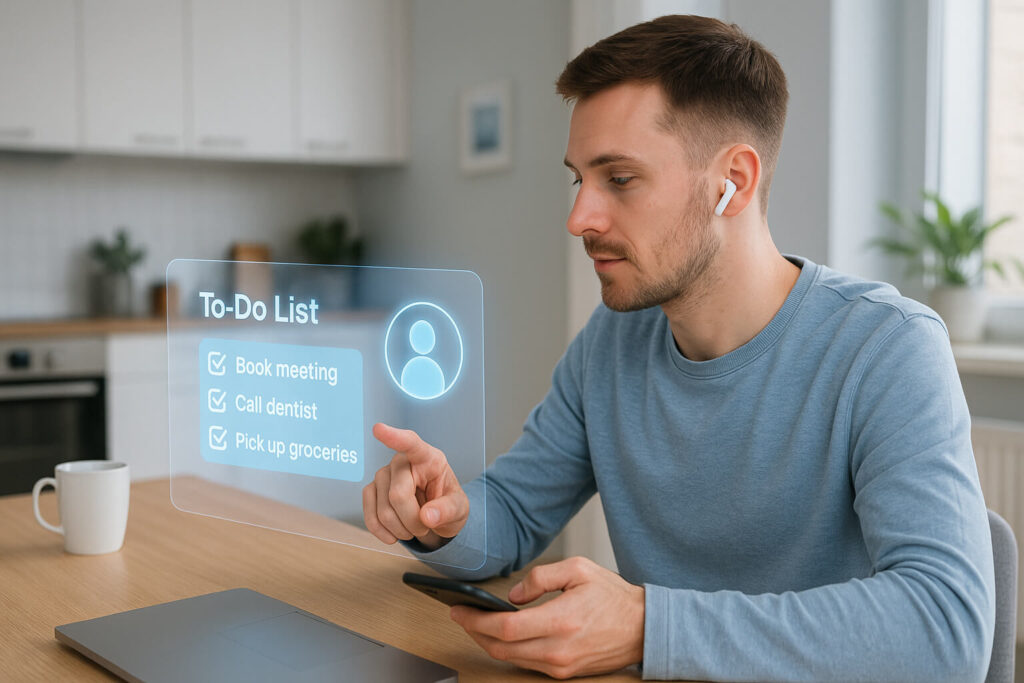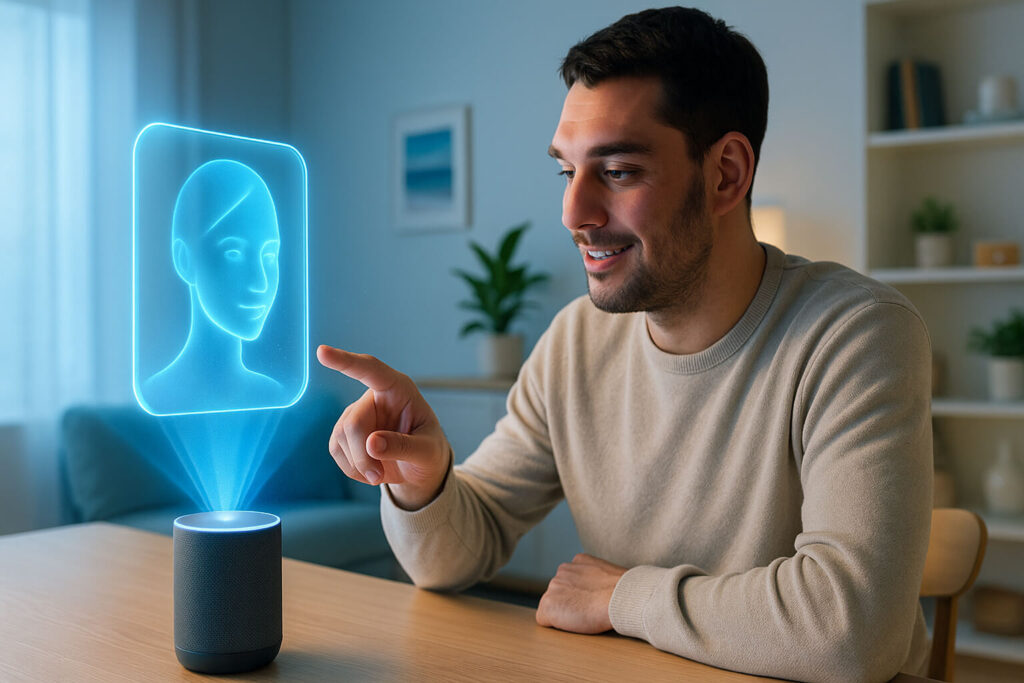1. Introduction: The Rise of Personal AI
You’ve already met your first personal AI. Maybe it lived in your phone. Maybe it answered when you said, “Hey Siri” or “Alexa, what’s the weather?” Quietly, without fanfare, AI slipped into your life. But that was just the beginning.
Those early assistants were helpful. But they didn’t know you. They didn’t learn your routines. They couldn’t think ahead. By 2027, that changes—radically.
A personal AI in 2027 won’t just respond. It will anticipate. It will speak your language, schedule your tasks, sort your inbox, and even calm your nerves. It won’t feel like an app. It’ll feel like a sidekick. One that understands you better with each day.
This shift is huge. It’s not just a new tool. It’s a new relationship. So what does that mean for your work? Your home? Your health? Your privacy? And most importantly…
What happens when everyone—yes, everyone—has a personal AI?
In this article, we’ll explore the rise of personal AIs, what they’ll do, how they’ll change your daily life, and what challenges (and opportunities) lie ahead. You don’t need a tech degree to follow along—just curiosity and a glimpse of tomorrow.
The future’s not far. It’s personalized. And it’s almost here.
2. What Is a Personal AI, Really?
A personal AI is more than a smart assistant. It’s not just reactive. It doesn’t wait for you to speak. It listens. It learns. It acts.
Think of Siri or Alexa. They answer questions. They play music. They set timers. But they don’t understand you. They don’t grow with you. A personal AI in 2027 does all that—and much more.
It remembers what you like. It knows when you’re busy. It senses when you need rest. It helps before you ask. Not because it’s magic—because it knows you.
A personal AI is like a digital butler. It handles the small stuff. It reminds you to call your mom. It fills out forms. It rebooks flights when your meeting runs long. It does the boring work so you don’t have to.
Or picture it as a co-pilot. You drive, but it watches the road. It gives you better routes. It checks your blind spots. It saves your time. Some even say it’s a digital twin. A smarter, faster, always-on version of yourself. It works behind the scenes. Quietly. Reliably.
The big shift? Virtual assistants respond. Personal AIs anticipate. They adapt. They evolve. They don’t just serve. They support. By 2027, these AI companions won’t be rare. They’ll be normal—like smartphones today. You won’t have to train them. They’ll train themselves. Over time. With care.
That’s the real power of a personal AI. It’s not artificial. It’s attentive.
3. The Evolution: How We Got Here
First, we had rules. Code followed commands. Machines did what we told them. Then, we had automation. Tools clicked buttons. Software ran tasks. Humans stepped back. Next came learning. AI started watching. It found patterns. It guessed what came next. Then, it got creative.
With models like GPT, AI learned to write. To code. To speak. To sound human. Words felt natural. Answers felt real. That was generative AI. It changed everything. One prompt. One reply. Infinite ideas. But even GPT had limits. It didn’t know you. It didn’t grow with you. That’s where personal AI begins.
OpenAI built GPT. Google launched Gemini. Others shared open-source models. Hugging Face. Meta. Mistral. People started customizing. Fine-tuning. Teaching their own AI. Soon, AIs remembered tasks. Then names. Then moods. They stopped being general. They became personal.
Now, your AI doesn’t just answer. It adapts. It reads your tone. It sees your calendar. It thinks ahead. A personal AI knows what matters. It doesn’t guess. It learns. This shift wasn’t fast. But it was steady.
2000s: Simple Automation.
2010s: Virtual Assistants.
2020s: Generative AI.
By 2027: Personal AI for everyone.
The world opened its code. Developers shared breakthroughs. AI moved from labs to homes. Now, your AI writes your emails. Books your doctor. Sorts your files. Not once. Every day. Each step got smarter. Each leap got closer. AI didn’t just evolve—it personalized.
What comes next? Something smarter. Something tailored. Something that feels less like a tool—and more like a teammate. That’s the journey. From code to companion. And personal AI is the destination.
4. What Personal AIs Will Do for You
A personal AI won’t just live in your phone. It will live in your day. It starts small. It sets reminders. It blocks spam. It flags emails you should read. It keeps your calendar clean. You wake up. It adjusts your lights. It starts your coffee. It tells you the weather, your schedule, your mood.
Then it helps you work. It joins meetings. It takes notes. It highlights action steps. It writes follow-up emails—fast, clear, human. It checks your inbox. It drafts your replies. It filters what can wait. You’re tired. It sees it. It slows things down. It shifts tasks. It protects your focus.
At lunch, it knows your diet. It suggests meals. It tracks what you eat. It syncs with your smart fridge. If milk runs low, it reorders. You come home. It dims the lights. It warms the room. It plays the music you need. And when you feel off, it checks in. Not with scripts—with care.
It says, “You’ve been quiet. Want to talk?” That’s the difference. Tools do tasks. Personal AIs respond with thought. They see context. They know tone. They notice stress. They offer rest. It learns your habits. Then, it adapts. Quickly. Quietly. This isn’t science fiction. It’s scheduled. It’s coming. And it’s personal.
Your personal AI won’t just follow orders. It’ll take initiative. It’ll take care of details. It’ll give you time back. For work. For rest. For life. You’ll forget it’s there—until you need it. Then you’ll wonder how you lived without it. That’s the promise of personal AI in 2027: not just smart, but sensitive. Not just useful, but essential.
5. Privacy, Ethics & Control
A personal AI knows a lot. It sees your calendar. It reads your messages. It hears how you speak. It tracks your choices. But who controls that knowledge? You do—if the system is fair. But not all systems are. Some models are open. You can see the code. You can delete the data. You can move your AI if you switch platforms.
Others are closed. You don’t see what’s saved. You can’t check how it’s used. You trust the company—and hope they’re careful. Open-source gives you power. You choose how it learns. You decide what it stores. You own the memory. But it comes with work. You must update. You must secure. You must manage settings.
Closed models are easy. No setup. No fuss. But they keep control. Not you. This creates a trade-off. Freedom versus convenience. Privacy versus polish. A personal AI holds your digital soul. Your habits. Your voice. Your past.
So, ask the hard questions:
- Who owns your data?
- Can your AI forget?
- Is your memory locked inside a company?
Ethics matter here. Because this isn’t just data—it’s identity. Governments may step in. Rules may change. But you should still know the risks. In 2027, having a personal AI won’t be rare. But trusting one will still be personal. Choose wisely. Ask more. Own your AI—or it may own you.

6. How Personal AIs Will Change Society
A personal AI won’t just help you. It will reshape us. At work, it will handle tasks. It will schedule meetings. It will draft emails. It will check documents. Some say it will do 30% of your job. That means less busywork. But also, new pressure. If your AI works faster, will you need to?
For students, the shift will be big. A personal AI tutor will teach at your pace. It will explain again. It will quiz you gently. It will never judge. Grades may rise. But questions will too. Did the student write the paper? Did the AI? In health, the change will feel quiet—but deep.
Your personal AI will track your steps. Your sleep. Your heart rate. It will spot patterns. It will see dips. It will alert you—before you feel off. It will book your checkup. It will remind you to move. It will say, “Drink water now.” Doctors will get help. Patients will get time. But data will flow. Health is private. Will it stay that way?
Jobs will shift. Schools will shift. Healthcare will shift. The gains will be real. So will the questions. Because a personal AI doesn’t live alone. It touches systems. It touches lives. Some will feel seen. Some may feel watched. Society must adapt—fast and fair.
The future won’t be just smarter. It will be different. Deeply. Daily. And the biggest shift? AI won’t just change how we work. It will change what we are.
7. What It Means for You in 2027
Your personal AI starts before you do. It wakes you up—gently. It opens the blinds. It warms the shower. It reads your mood from your voice. It adjusts the day to fit. As you eat, it speaks. “You have two meetings. One rescheduled. The other moved online.” You nod. It updates your calendar. It alerts your team. You don’t lift a finger.
Emails arrive. Your personal AI filters noise. It flags what matters. It drafts responses. You tweak them—or not. During your meeting, it listens. It summarizes. It highlights action items. It sends notes before you even ask. At lunch, it tracks calories. It suggests meals. It orders groceries. You approve with one tap.
Later, you slow down. Your AI notices. It suggests a walk. It blocks your next hour. Evening comes. Lights dim. Music plays. It knows you’re tired. It knows what you need. Before bed, it says, “Tomorrow looks full. Want to prep now or in the morning?” You choose. It adjusts. That’s not luxury. That’s normal—in 2027.
A personal AI won’t make life perfect. But it will make life easier. Cleaner. Smoother. Not by doing everything. But by doing enough. Enough to breathe. Enough to focus. Enough to feel present.
In 2027, that’s what it means to have a personal AI. Not just smarter tech. But smarter time.
8. Conclusion: The Future Is (Almost) Now
The future came quietly. One update. One app. One task at a time. Now, it’s here—waiting in your pocket, ready on your desk. A personal AI doesn’t shout. It whispers. It listens. It learns. Then it helps. It doesn’t just save time. It gives you space. Space to think. To rest. To live.
From emails to errands, from tasks to thoughts, your personal AI handles the load. Softly. Daily. Seamlessly. This isn’t some distant dream. It’s a clear direction. The tools are real. The shift is close. And by 2027, it’s likely everyone will have one. Work will feel lighter. Homes will feel smarter. Life will feel… less jammed.
But this is only the start. The real story? It’s still being written. By users. By builders. By you. So be curious. Stay sharp. Ask better questions. Because the next time your personal AI says, “I’ve taken care of it,” you’ll smile—knowing it did. The future isn’t coming. It’s syncing.
9. Frequently Asked Questions (FAQs)
Q1: What is a personal AI and how is it different from Siri or Alexa?
A personal AI doesn’t just respond—it learns. It adapts to your habits. It understands your needs. Unlike Siri or Alexa, it evolves with you over time.
Q2: Will everyone really have a personal AI by 2027?
That’s the trend. Tech is moving fast. Costs are dropping. Tools are growing smarter. By 2027, a personal AI could be as common as a smartphone.
Q3: Can a personal AI handle work tasks too?
Yes. It can schedule meetings, write emails, take notes, and filter information. Many people already use AI to boost productivity. A personal AI just makes it personal.
Q4: Is my data safe with a personal AI?
That depends. Some models store data locally. Others send it to the cloud. Open-source gives more control. Closed systems may offer ease—but less transparency. Always check privacy settings.
Q5: Can a personal AI understand emotions?
Many can. A personal AI may track tone, mood, and stress patterns. It learns how you speak. Then, it responds—calmly and kindly.
Q6: Do I need technical skills to use a personal AI?
No. The best personal AIs work quietly. No coding. No setup. They fit into your life like any smart device.
Q7: What’s the biggest benefit of having one?
Time. A personal AI frees your focus. It handles tasks. It reduces clutter. So you can do more—with less effort.
Also read:
Think Your Computer Is Fast? Wait Until You Meet Its Quantum Cousin.


